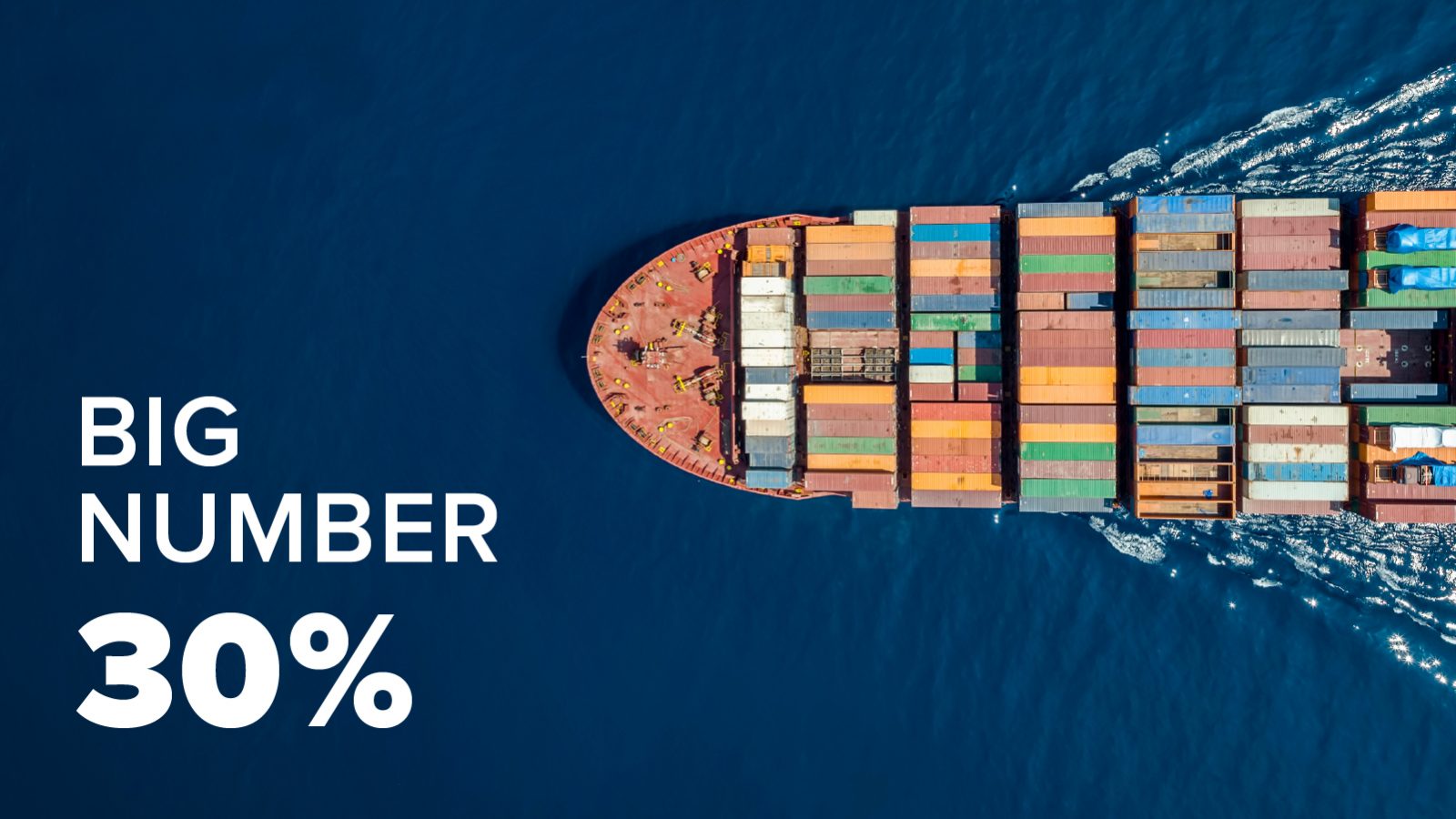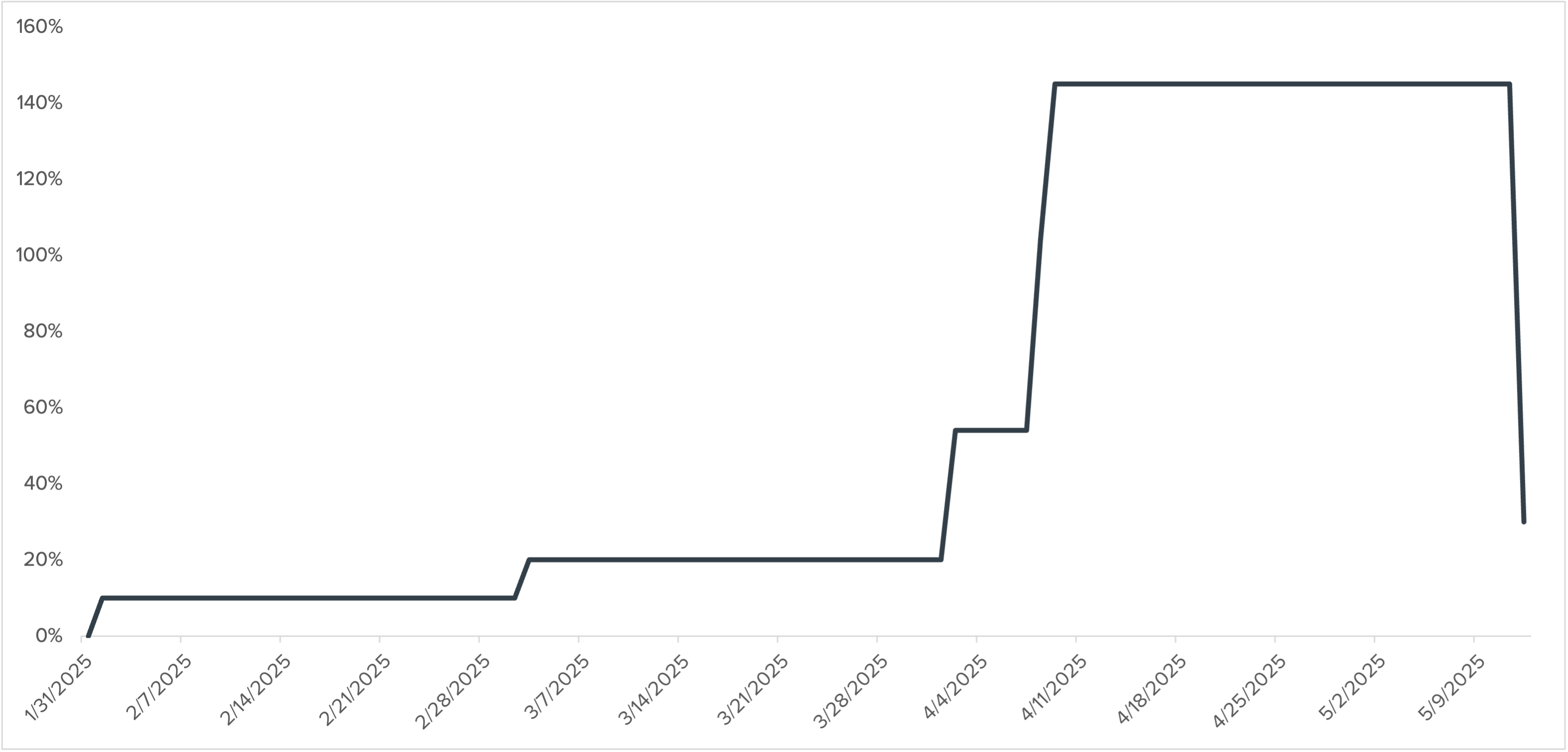Despite lower levies for now, uncertainty remains
On Monday, the U.S. and China announced that they will temporarily suspend the high import tariffs they imposed on each other earlier this year while the two countries negotiate a new trade agreement. Businesses and investors cheered the news, driving up major stock market indices by 2% or more on Monday alone.
As of today, overall tariffs on Chinese goods imported to the U.S. are at 30%. That’s down sharply from the 145% level of the past few weeks, but it’s still higher than where tariffs stood when President Trump took office in January (see the chart). Meanwhile, China’s combined tariffs on U.S. imports are now at 10%, down from 125%.
Tariffs on Chinese Goods Imposed By the Trump Administration
Source: Calculations by Horizon Investments, data as of 05/12/25.
On balance, this current tariff pause is good news, as the existing tariffs would have resulted in a full trade embargo and major shortages of certain imported goods here in the U.S.
That said, we believe uncertainty remains in key areas, including:
- Timing: The tariff pause is set to last for just 90 days, and whether the U.S. and China can negotiate a trade agreement in that time is unclear.
- Enforcement: Enforcing any trade deal between the two countries may be difficult.
- Impact on growth: Based on the details of the recent trade agreement between the U.S. and the U.K., tariffs with other nations going forward may hover around the 10% mark rather than fall closer to 0%. Since tariffs are taxes, a rate of even 10% could crimp business and economic growth in the U.S.
These factors and other details around tariff policy will significantly impact the economic outlook. Pro-growth measures like tax cuts and business investment incentives remain crucial but have received less attention recently. These could soon become a reality through ongoing deregulation efforts and the tax bill currently moving through Congress.
Keep in mind that it’s extremely rare for the financial markets to have complete clarity about the state of the global economy. We believe in maintaining well-diversified, goals-based portfolios that offer the potential to navigate through the many evolving policy developments we’re likely to experience in the coming months.


